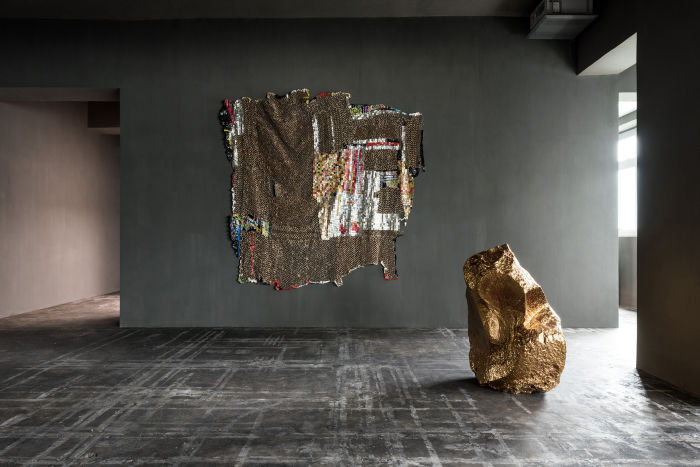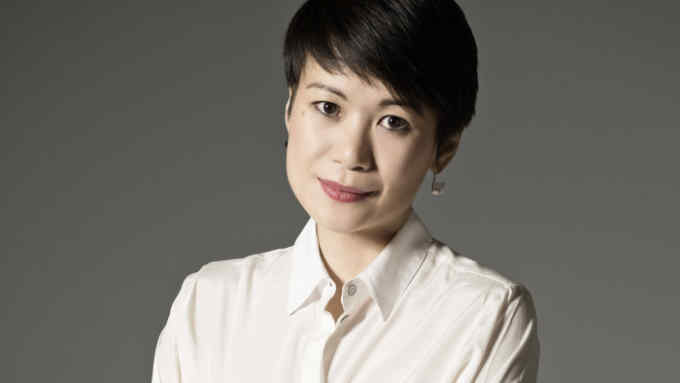Belgian art dealer Boris Vervoordt on relocating his gallery to south Hong Kong

Roula Khalaf, Editor of the FT, selects her favourite stories in this weekly newsletter.
This weekend in Wong Chuk Hang, a residential and industrial area on the south coast of Hong Kong Island, Belgian art dealer Boris Vervoordt is opening the doors to the latest iteration of Axel Vervoordt, the Antwerp-based gallery he founded in 2011, named after his father’s interior design and antiques business. Occupying the 21st and 22nd floors of the Coda Building, the space has raw concrete floors that lend it an unpolished charm, and views of the mountains to the north and water to the south.
The street below is quiet compared to the surroundings of the gallery’s previous location. When Vervoordt arrived in Hong Kong in 2014, he was a tenant in the Entertainment Building in Central, the financial heart of the city at the north of the island. Pace Gallery was already there, and Ben Brown Fine Arts had already opened just down the street at the Pedder Building in 2009, while Gagosian followed in 2011. The location was ideal, but the space itself, an area of just 60sq metres, was not.
“We understood immediately that the space was too small, but it was a nice stepping stone, a way to understand that we actually needed to be here,” Vervoordt says. Expanding to Hong Kong felt like a natural next step — at the time, the region was starting to emerge on to the international scene. His space served as a platform for artists who hadn’t had a presence in the region.
In the span of five years, thanks in no small part to the arrival of the Art HK fair in 2008, which became Art Basel Hong Kong in 2013, Central has exploded as a gallery hub . This was Vervoordt’s cue to exit. “We were on the waiting list for Pedder, and it didn’t feel right to me,” he says. “I don’t want to operate a solely commercial space. We want to bring artists who have never been shown here and create a dialogue. For that you need freedom, and the freedom to not be in an expensive space.”
Heading south, he joined a number of galleries who occupied the more spacious and affordable real estate there, several of whom had decamped from Central. Formerly economically depressed as a result of Hong Kong businesses relocating to mainland China in the 1980s, South Island is now a locus of young energy, home to art spaces including Empty Gallery and Gallery Exit, which focus on emerging artists and new media. Since moving, Axel Vervoordt has joined the South Island Cultural District, a group that now includes 19 galleries and studios in Wong Chuk Hang and the adjacent neighbourhoods of Aberdeen and Tin Wan. Formed in 2013, its aim is to promote the area, which has made strides since the addition of an MTR station in 2016.
Vervoordt inaugurates the exhibition space on the gallery’s lower floor with Infinitive Mutability, a show of Peter Buggenhout, Kimsooja and Bosco Sodi. Hailing from three continents — Europe, Asia, and North America, respectively — their works meditate on cultural identity through their use of quotidian objects. On the upper floor, dark walls and an Axel Vervoordt sofa offer a moodier vibe to the lounge where Vervoordt will meet with collectors, redolent of the wabi-sabi roughness that defines his father’s practice.
Now with more than 10 times the space he had in his previous location, Vervoordt is looking forward to making use of what the gallery’s new home has to offer — starting with its improved hosting capabilities. On Friday, as part of the annual South Island Art Day of gallery walks and open studios, he held a brunch there. Previously, “we always had to go to restaurants”, Vervoordt says, noting the irony of having to entertain outside of the Entertainment Building. “Now we have our own kitchen.”
‘Infinitive Mutability’, to June 1; axel-vervoordt.com

Comments